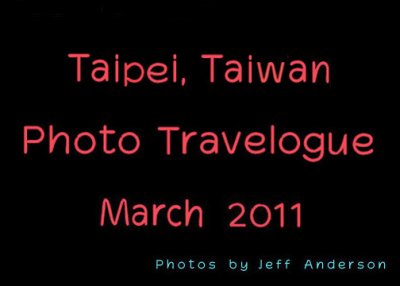
Taipei, Taiwan cover page. |
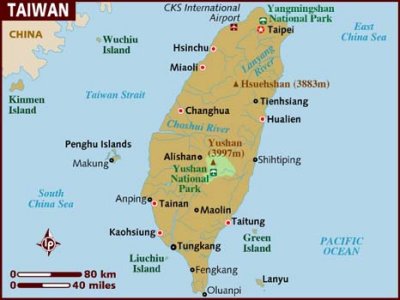
Map of Taiwan with the star indicating Taipei. |

View of the National Concert Hall at the north end of Liberty Square in Taipei. |

Cornice and rooftop details of the National Concert Hall. |
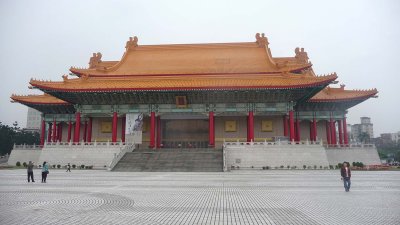
The National Concert Hall as seen from Liberty Square. |

Side view of the National Concert Hall with flowers. |

Across from the National Concert Hall at the south end of Liberty Square is the National Theater. |
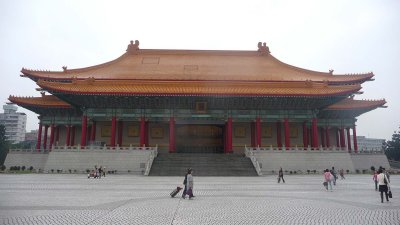
The National Theater as seen from from Liberty Square. |
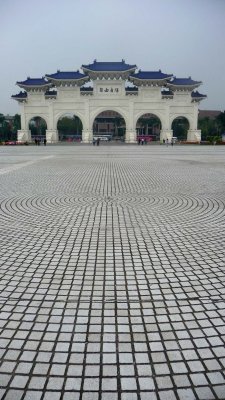
Entrance gate to Liberty Square with its impressive archways. |
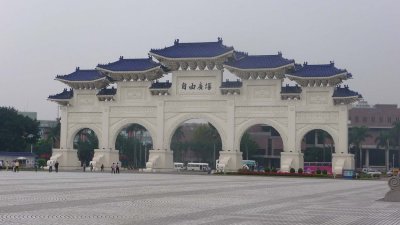
Liberty Square serves as the site of mass gatherings, red-carpet ceremonies and outdoor festivals and concerts in Taipei. |
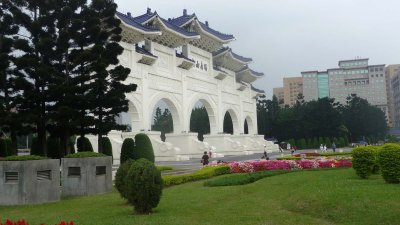
Side view of the entrance gate to Liberty Square with azaleas blooming. |
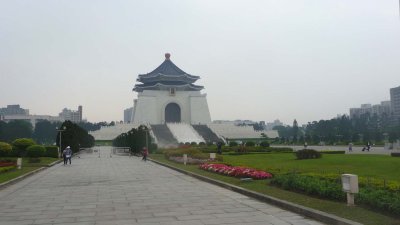
View of the Chiang Kai-shek Memorial Hall at the east end of Liberty Square. |
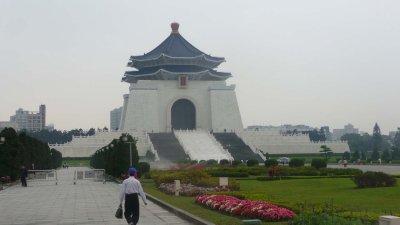
Chiang Kai-shek (1887 – 1975) was the founder of modern-day Taiwan, which he ruled from 1945 until his death in 1975. |
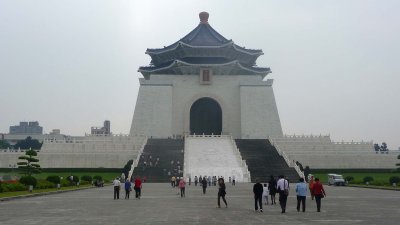
The memorial was designed by architect Yang Cho-cheng. It opened on April 5, 1980, on the 5th anniversary of the leader's death. |

Detail of the top of the memorial. |
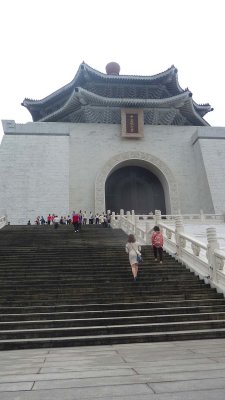
Stairs leading up to the memorial hall. |
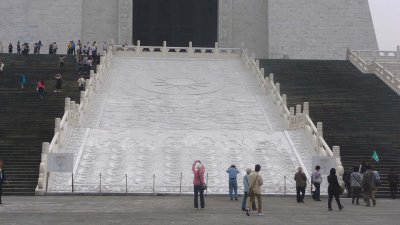
Design adorning the center of the stairs. |
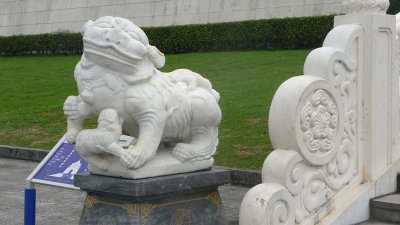
Female lion sculpture at the base of the stairs. Note the baby lion. |

Looking back at Liberty Square from the Chiang Kai-shek Memorial Hall. |
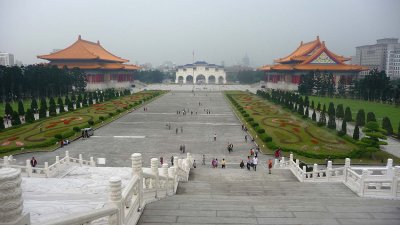
View from the top of the stairs of the memorial hall looking back at Liberty Square. |
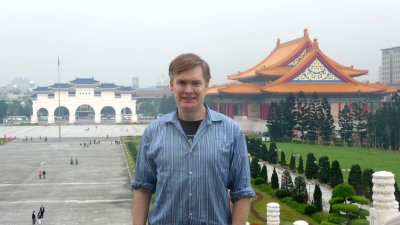
Me posing at the top of the stairs with Liberty Square behind me. |
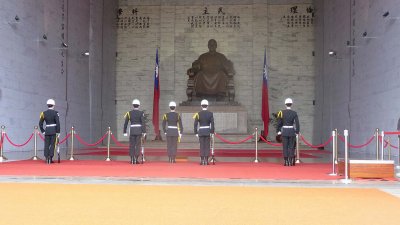
I arrived at the Chiang Kai-shek memorial just in time to view the "changing of the guard." |
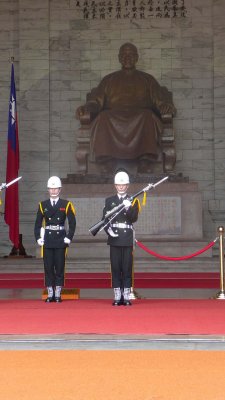
Soldiers in front of the statue of Chiang Kai-shek. |
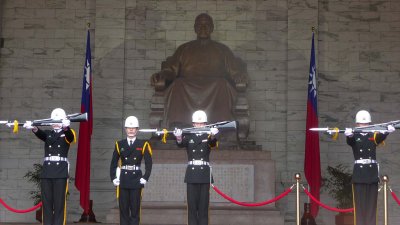
Rifles lifted during the "changing of the guard" ceremony. |
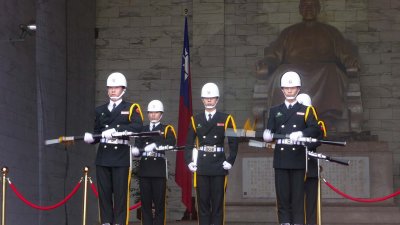
The soldiers were also twirling their rifles. |
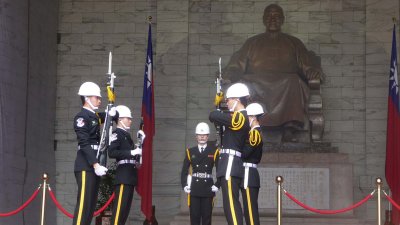
Facing each other with rifles lifted. |
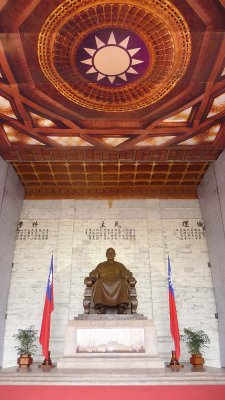
Statue of Chiang Kai-shek with flags on both sides of him and an impressive ceiling decoration. |

The flags are the national flag of Taiwan. |
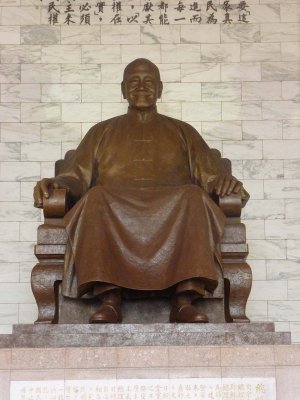
Close-up of the statue of Chiang Kai-shek. |
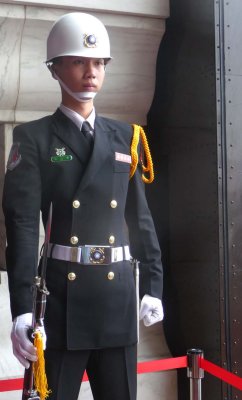
One of the two remaining guards after the ceremony was completed. |
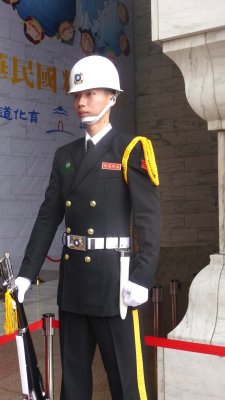
Note the painted wall design behind him. |
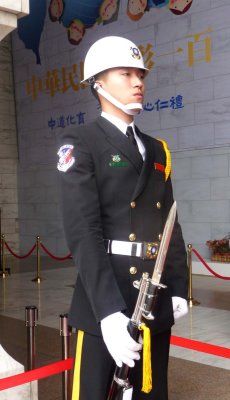
Close-up of the second guard. |
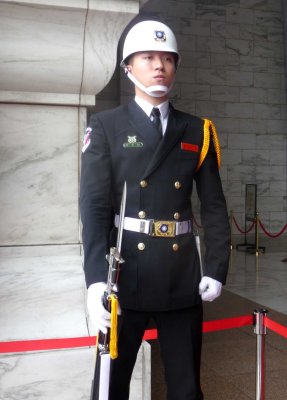
He was statuesque and expressionless as I took his picture. |
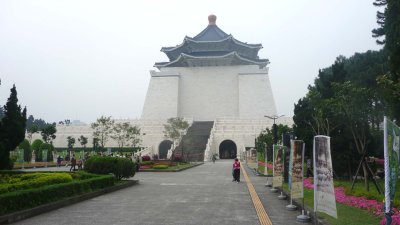
Northern view of the Chiang Kai-shek Memorial Hall as I was leaving. |
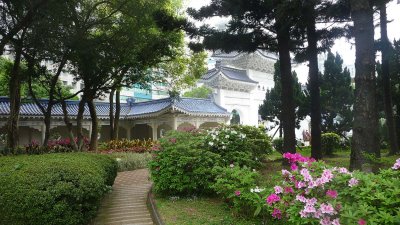
I exited through this garden with rhododendrons blooming. |
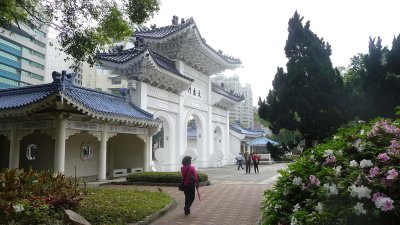
Close-up of a rhododendron bush and view of a north exit gate. |
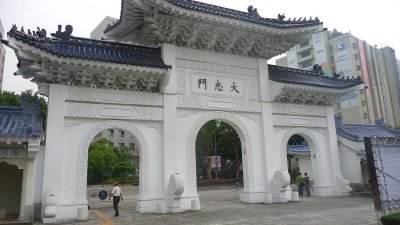
The gate exited to ZhōngShān South Road in Taipei. |
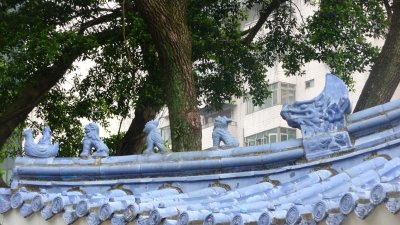
Details at the top of the gate. Generally, the more animals, the more important is the structure. |
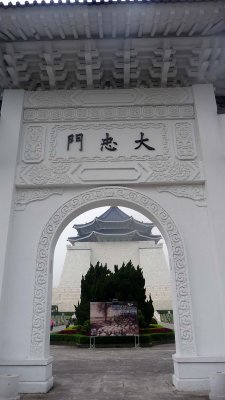
View of the Chiang Kai-shek Memorial Hall through the gate at ZhōngShān South Road. |
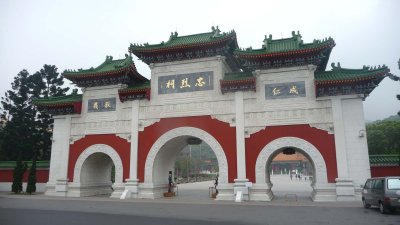
My next stop on the tour was to the Martyrs' Shrine dedicated to all the men who have given their lives fighting for Taiwan. |

Again, I got there just in time to witness the "changing of the guard." |
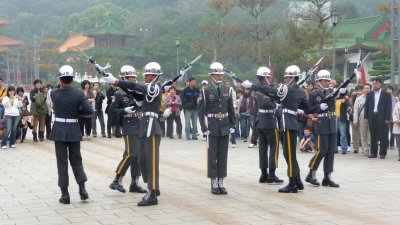
The soldiers were lifting their bayonets high as they performed their ceremony. |

They were standing rigid at attention. |
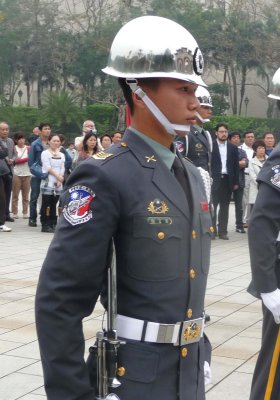
Close-up of one of the guards. |
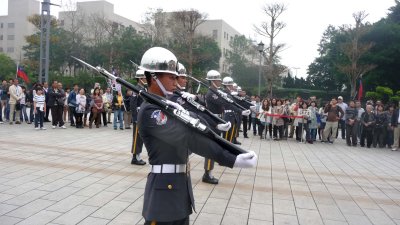
Performing in flawless unison. |
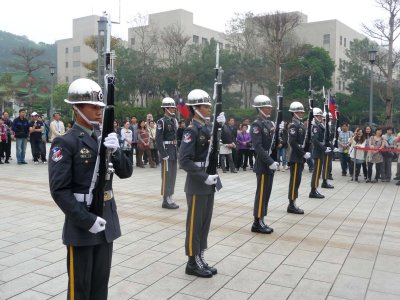
The "changing of the guard" ceremony is very impressive and not to be missed. |
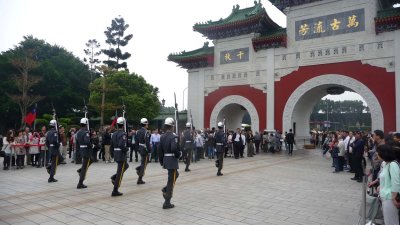
Note the arched entrance gate of the Martyrs' Shrine with the "changing of the guard" ceremony wrapping up. |
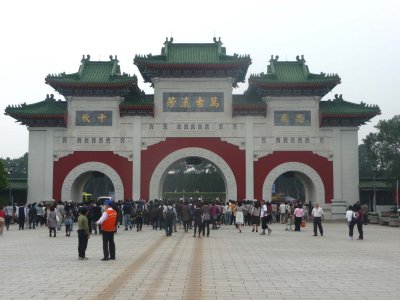
View of the entrance gate after the ceremony was over. |
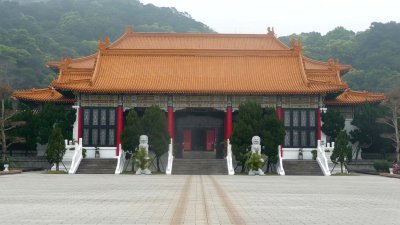
Looking towards the Martyrs' Shrine while walking away from the entrance. |
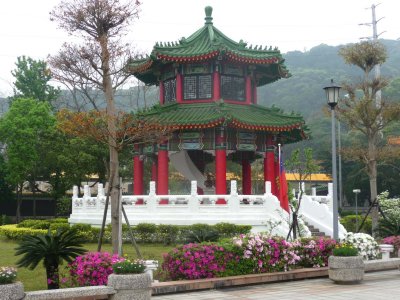
Chinese gazebo-like structure at the Martyrs' Shrine with azaleas blooming. |
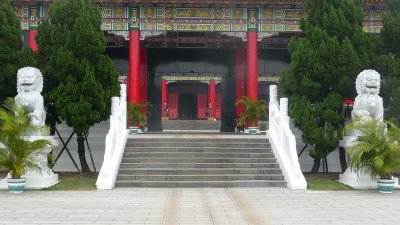
Close-up of the Martyrs' Shrine. |

Female lion sculpture with a baby. |
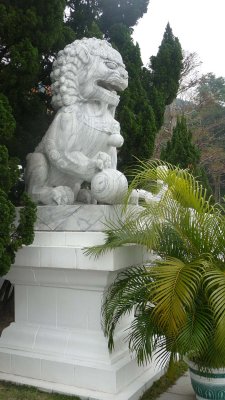
Male lion sculpture with his paw resting on a ball. |
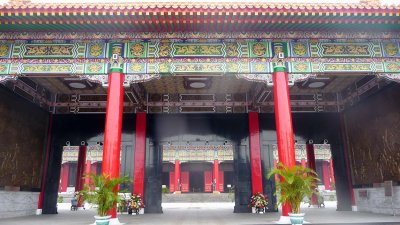
View from the interior courtyard of the Martyrs' Shrine. |
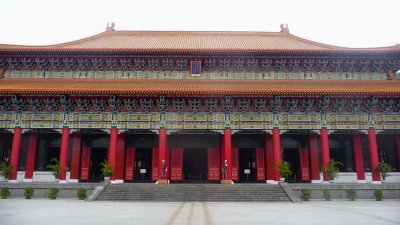
Main interior building. |
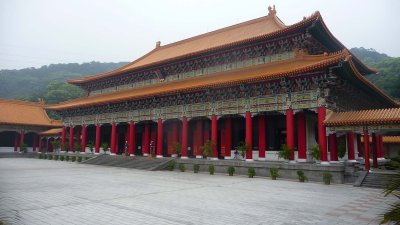
Side view of the building. |
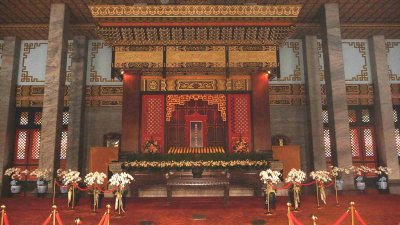
Interior of the Martyrs' Shrine. |
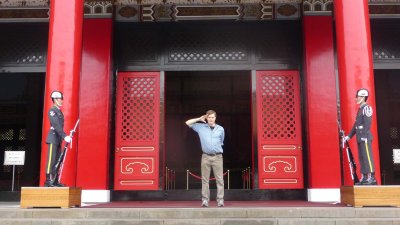
Me saluting the martyrs with the guards standing by. |
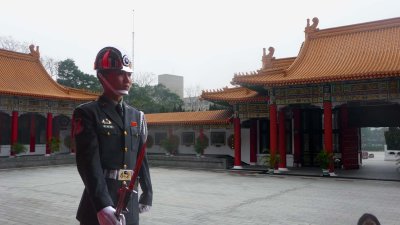
Guard standing at attention with the courtyard and Martyrs' Shrine buildings in the background. |

Another view of the guard standing as motionless as a statue. |
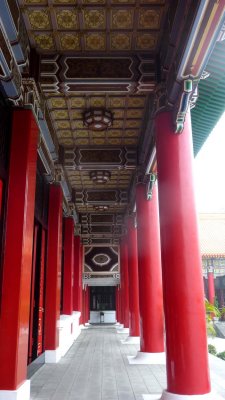
Details of columns and ceiling designs at the Martyrs' Shrine. |
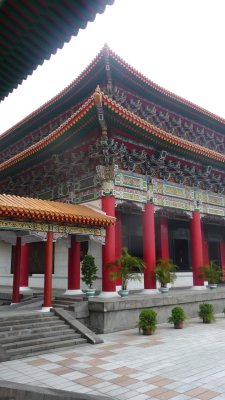
Elaborate decoration at a corner of the building and of the cornice. |

Records are stored in this room. Note the exquisite tiles on the ceiling. |

Another view from the interior courtyard of the main building of the Martyrs' Shrine. |
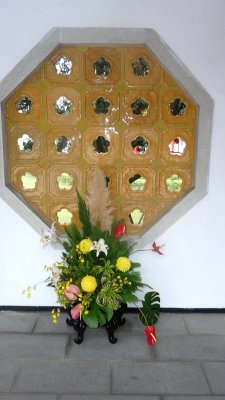
Interesting window with flowers to commemorate the martyrs. |
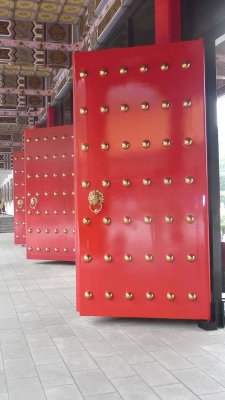
These red door are very distinctive at the Martyrs' Shrine. |
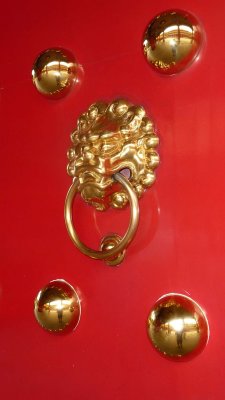
The doors have beautiful brass hardware. |
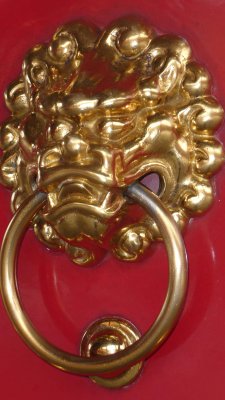
Close-up of the brass door knocker. |
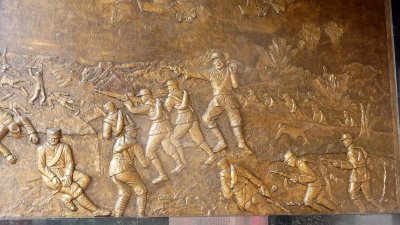
Plate depicting the Battle of Shanghai at the Martyrs' Shrine, where 60,000 Chinese were killed fighting the Japanese in 1937 |
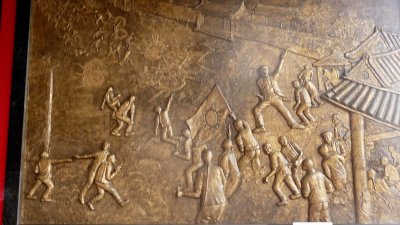
Depiction of the Canton Uprising in 1911. It resulted in the overthrow of the Manchu Monarchy and the formation of Taiwan. |

View of the entrance gate as I left the Martyrs' Shrine. |
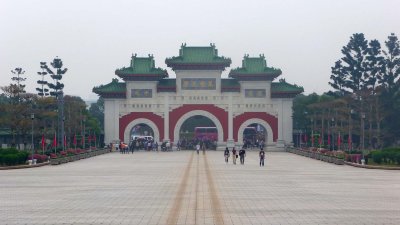
The shrine's magnificent Ming Dynasty architectural style is similar to that of the Taihe Dian Imperial Palace in Beijing. |
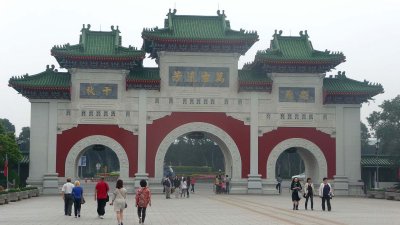
The shrine is huge. More than 33,000 square meters of fields surround it. |

The next stop on my itinerary was the Taiwan Arts and Handicraft Center, where I bought some refrigerator magnets. |
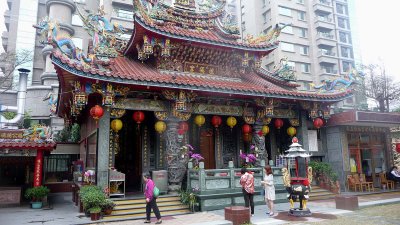
View of the Lungshan (Dragon Mountain) Temple, Taipei's oldest and most popular temple (built in 1738 and rebuilt in 1953). |
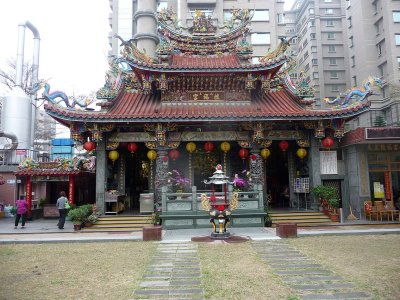
Legend is that someone left a lantern of Kuanyin hanging on a tree. It began giving off light and granting wishes to people. |

Hence, local people built a temple there. It is known as a "meeting place of the gods" since over 100 deities worshipped here. |
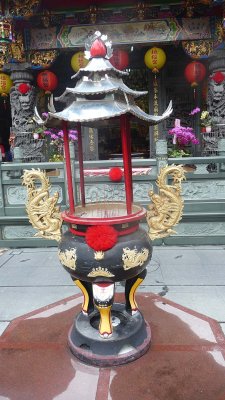
Ornate incense burner outside of the temple. |
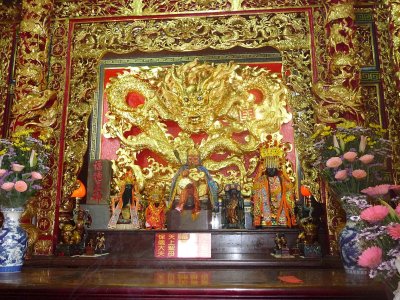
Shrine inside Lungshan Temple with a magnificent golden dragon. |
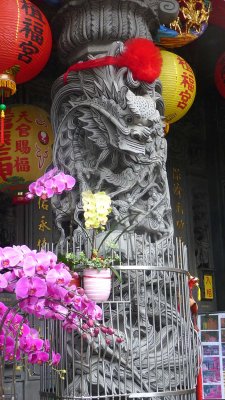
Another sculptural depiction of a dragon. |

This is illuminated with the names of people who have contributed to the temple. |
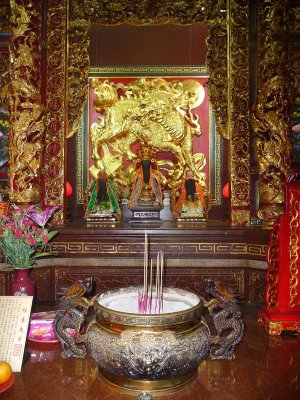
Another shrine in the Lungshan Temple with an incense burner in front. |
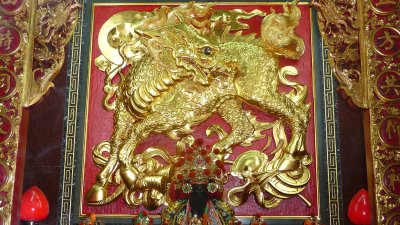
Golden depiction of a creature that looks like a cross between a horse and a dragon. |
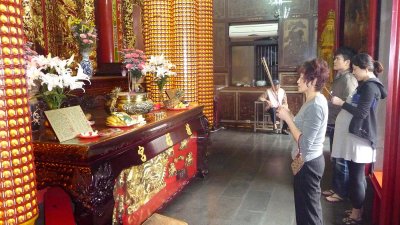
People with incense worshipping at the Lungshan Temple. |
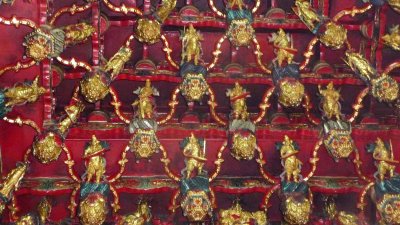
Opulent details embellishing the temple. |
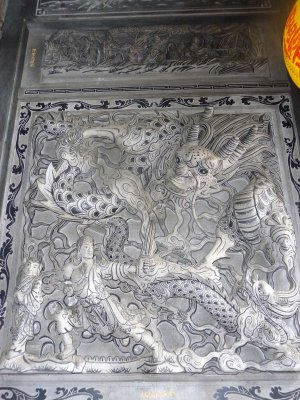
A chivalric portrayal of a swordsman fighting a dragon. |
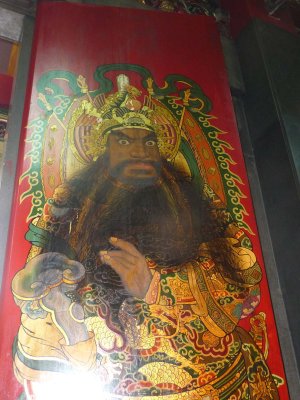
A regal painting in the temple of (perhaps) an ancient king. |
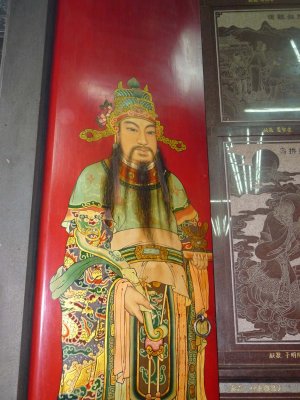
A majestic painting of a noble-looking subject. |
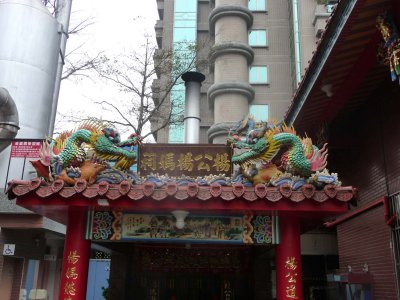
As I left the Lungshan Temple, I admired these dragons on the rooftop. |
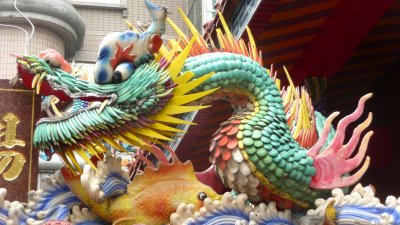
Close-up of one of the dragons. |
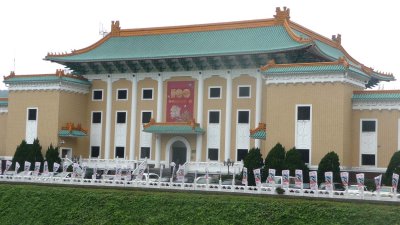
The National Palace Museum in Taipei is the national museum of Taiwan. |
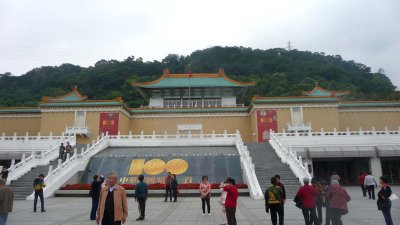
It houses the world's largest and most valuable collection of Chinese art. |
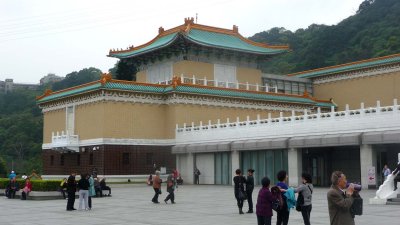
The collection encompasses over 8,000 years of Chinese history from the Neolithic age to the late Qing Dynasty. |
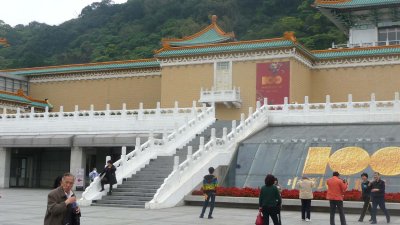
The National Palace Museum was originally established as the Palace Museum in Beijing's Forbidden City in 1925. |
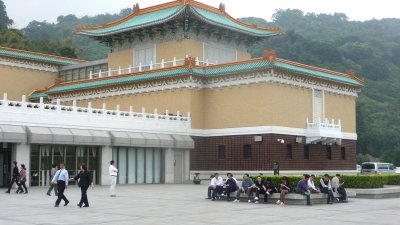
Chiang Kai-shek moved many pieces following the surrender of the Japanese and as a result of the Chinese Civil War. |
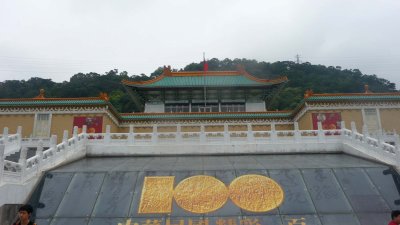
This worsened the rift between the 2 Chinas, since Chiang Kai-shek moved the priceless art from Mainland China. |

Sign at National Palace Museum commemorating of the 100th anniversary of founding of the Republic of China (Taiwan) in 1912. |

View from the terrace of National Palace Museum of the entrance to the museum. |
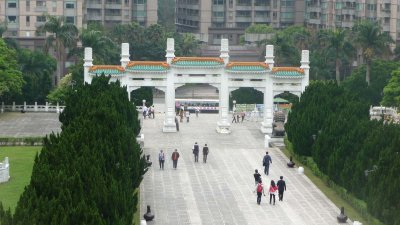
Note the arched entrance gate. |
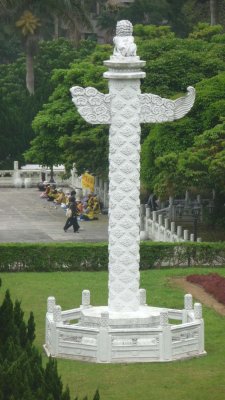
This unusual obelisk adorns the pathway to the National Palace Museum. |
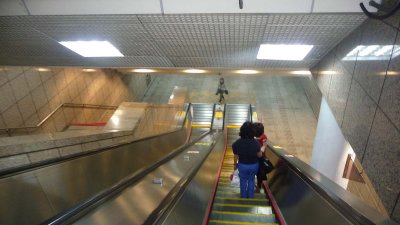
No trip to Tapei would be complete without riding the excellent Metro (Metropolitan Rapid Transit System). |
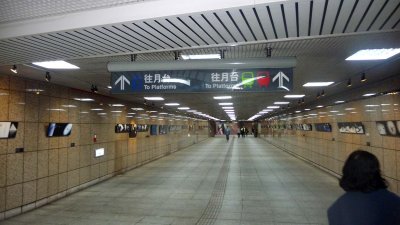
Platform leading to the Taipei Metro. |

View of the Metro station from the top of the escalator stairs. |

The trains came frequently and were on time. |
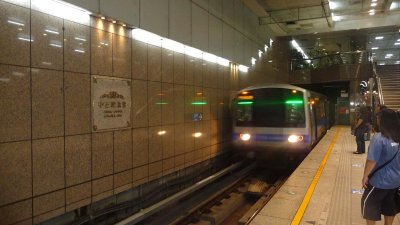
My train was approaching. I went 7 stops to Taipei 101 from Chiang Kai-shek Memorial Hall to Sun-Yat-Sen Memorial Hall. |
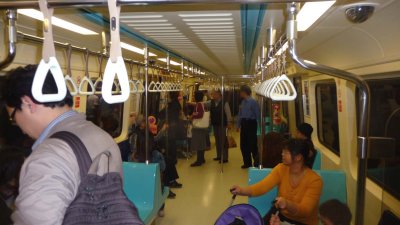
Interior of a Taipei Metro train. It was clean and modern. |
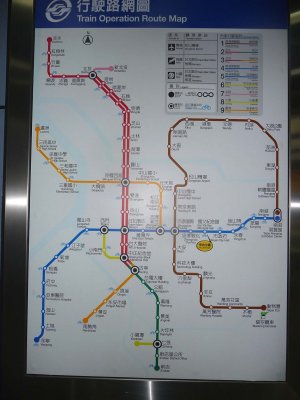
Taipei Metropolitan Rapid Transit System map. |
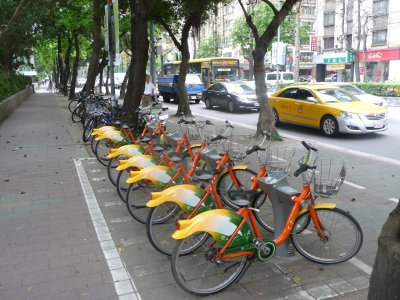
Upon leaving the Metro station, I spotted these bikes which are part of a new public bike rental system in Taipei named U-bike. |
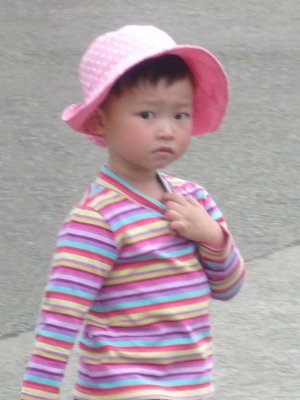
This cute Chinese girl was dressed for the spring weather. |

View of Taipei 101 World Financial Center, the 2nd tallest building in the world (as of March 2011) after Burj Khalifa in Dubai. |
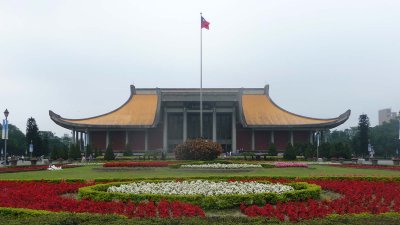
View of Sun Yat-sen Memorial Hall, which was built in 1972 on his 100th birthday. |
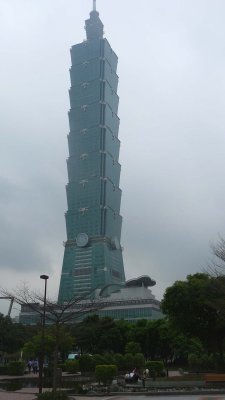
I am getting closer to Taipei 101, my destination. |
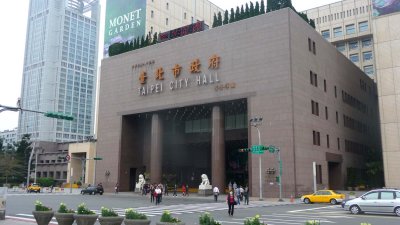
I passed by the Taipei City Hall. I should have gotten off at that Metro station since it is closer to Taipei 101. |
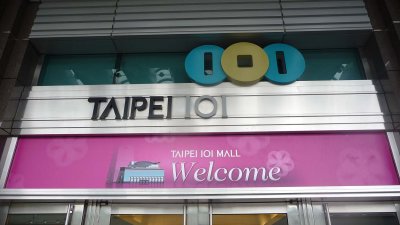
One of several entrances to Taipei 101. |
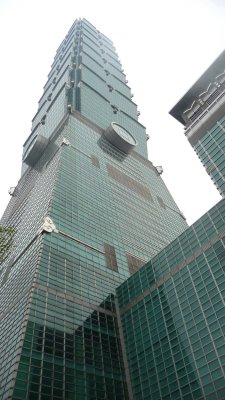
View from below looking to the top of Taipei 101. It is an imposing building. |

I took escalators from the shopping center on the ground floor to the 5th floor to get to the elevator going to the observatory. |
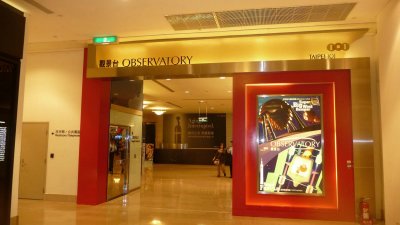
From here, on the fifth floor, is the elevator to the observatory. |
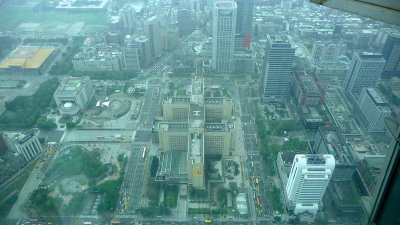
View from the observatory of Taipei 101. |

It was a bit overcast, so the views were limited. |
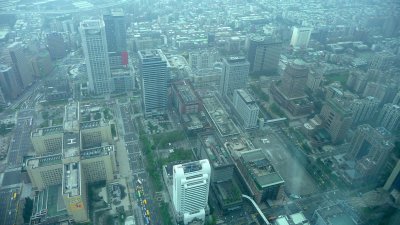
Taipei 101 dwarfed the buildings below. |
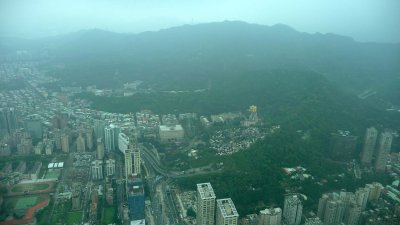
View of Tiger Mountain from Taipei 101. |
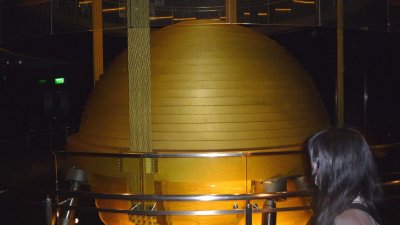
The damper of Taipei 101 is suspended from 4 floors. Its pendulum sways to offset movements in the building caused by wind. |











